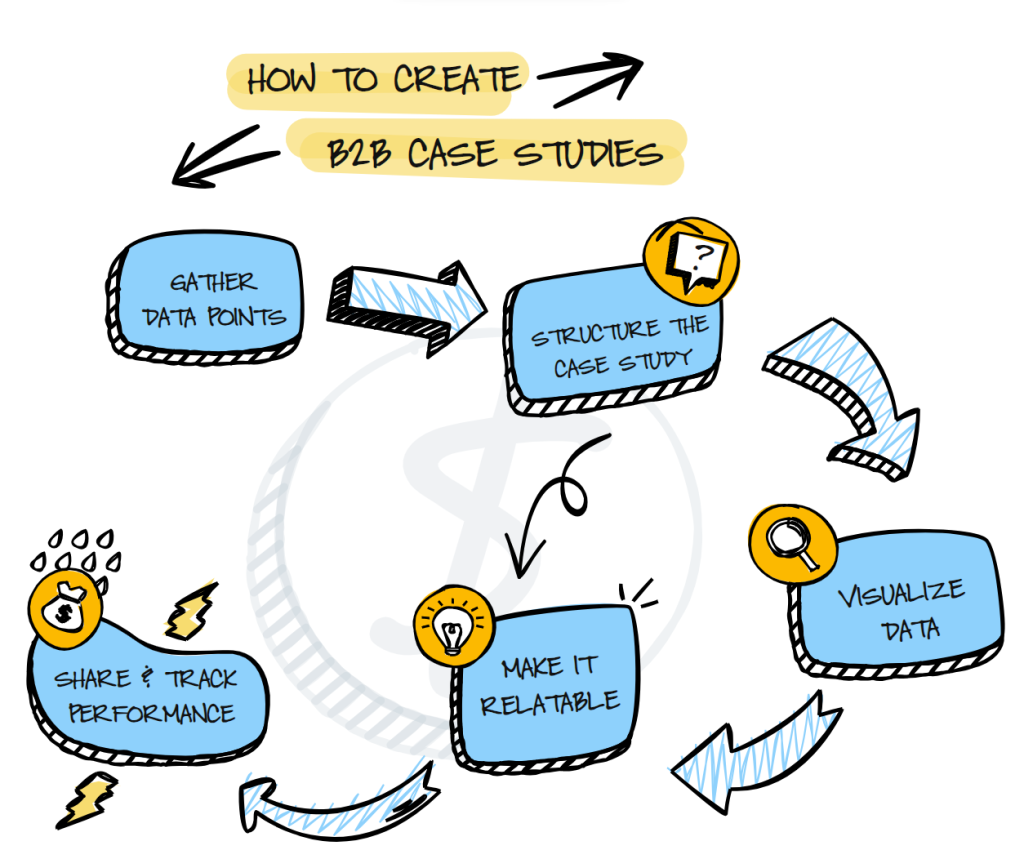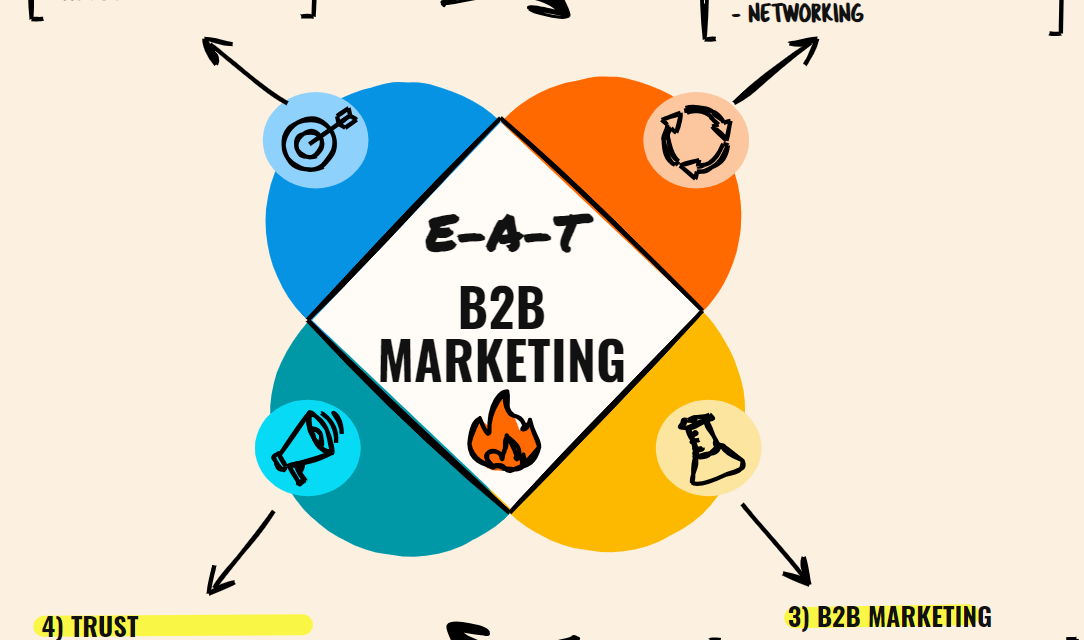As a B2B marketing expert, you continuously crave knowledge to improve results. No doubt then that you would want to know how to implement an E-A-T strategy.
How can you effectively reflect your brand’s expertise, authority, and trust through B2B marketing?
Let’s break down E-A-T (Expertise, Authority, and Trust) and how it can turbocharge your B2B marketing efforts.
What’s E-A-T all about?
E-A-T is a key idea in Google’s Search Quality Guidelines. Simply put, Google looks at how much expertise a page shows, how much authority it has, and how trustworthy it seems. It’s like the secret sauce for building credibility and standing out online – and it also works in the B2B world.
Expertise: Picture this – you’re the go-to guru in your niche. That means you’ve got the skills, knowledge, and experience to tackle whatever challenges come your way. Show off your expertise through killer content, case studies, and certifications.
Authority: You want to be the big cheese in your industry, right? That’s where authority comes in. Get those backlinks from reputable sites, rub shoulders with industry bigwigs, and strut your stuff at conferences and forums.
Trust: Trust is the glue that holds it all together. Be transparent, reliable, and consistent. Share success stories, customer testimonials, and reviews to show your B2B pals that they’re in safe hands.
How to put E-A-T into action
Here are some effective strategies to implement E-A-T in B2B marketing:
Content crusade: Pump out top-notch content that screams “We know our stuff!” Think blogs, whitepapers, webinars – anything that showcases your expertise and helps your B2B buddies solve their problems.
Thought leadership: You want people to see you as the Oracle of your industry, right? Get your team out there – write articles, speak at events, and get involved in industry chatter.
If you don’t have time for all of this, you can seek the help of a media owner like Thinklogic Media Group to craft a demand-generation strategy for you. They have expert editorial and marketing teams that can generate thought leadership articles, host webinars, and other demand-gen activities for your marketing goals.
Link building: Earn backlinks from authoritative websites within your industry. This not only improves your search engine ranking but also enhances your brand’s authority and credibility.
Social proof: Show off your happy clients and success stories. Let your satisfied customers do the talking and watch the trust factor skyrocket. You can leverage your data as case studies to establish strong social proof.

Website wizardry: Optimize your website for E-A-T factors. This includes having a clear ‘About Us’ page detailing your team’s expertise, displaying industry certifications, and providing easy access to contact information.
Reputation radar: Monitor and manage your brand’s online reputation through social listening and proactive engagement. Address any negative feedback promptly and transparently. Instead of waiting for negative feedback to come to you, actively engage with your audience, respond to their questions and concerns, and participate in relevant conversations—proactive engagement.
If you are a cybersecurity vendor, do consider participating in awards programs like the CybersecAsia Awards, which can help boost your reputation. Winning awards or even being nominated for an award entry can significantly enhance your credibility and authority within your industry. Additionally, award programs often offer opportunities for networking, exposure, and media coverage, further amplifying your brand’s visibility and reputation.
Networking and partnerships: Forge strategic partnerships with other trusted brands in your industry. Collaborate on joint marketing initiatives, co-authored content, or industry events to enhance your authority and reach.
Public relations (PR) is also a key networking strategy. B2B marketers must synchronize their efforts with the business agenda to create a harmonious synergy between PR and business outcomes. Learn more about how B2B marketers can navigate the shifting sands of PR here.
Best E-A-T B2B marketing strategies
Here are several types of B2B marketing strategies that can effectively boost your E-A-T:
Content marketing: Produce high-quality content that showcases your expertise in your industry. This includes informative blog posts, whitepapers, case studies, and webinars that address the pain points and challenges of your target audience. Kickstart your campaign by checking out our free content marketing templates.
Don’t forget to optimize your website and content to improve your search engine ranking. Higher rankings in search results signal authority and relevance to search engines, boosting your credibility with potential clients.
Gamification: Gamification is the new diverse content in B2B marketing. It showcases expertise by creating interactive experiences that educate audiences about products or services. It establishes authority through engaging games or competitions that highlight industry insights. Trust is built by fostering positive interactions, transparency, and support within gamified experiences.
Events: Host or participate in industry events, conferences, and webinars to showcase your expertise and network with potential B2B partners. Speaking engagements and panel discussions can position your brand as a thought leader in your field.
Influencer marketing: Collaborate with industry influencers and thought leaders to endorse your brand and products. Their endorsement can significantly enhance your authority and credibility in the eyes of your target audience.
How to measure E-A-T success
When you measure E-A-T, you’re basically figuring out if all your marketing efforts are paying off. By comparing your results with what others in your industry are doing, you can see where you stand. Check out the key metrics to assess your E-A-T’s success.
Engagement metrics: Monitor social media engagement, webinar attendance, and email open rates to assess audience trust and interest in your content.
Website metrics: Track metrics such as organic search traffic, backlink profile, and time spent on site to gauge the effectiveness of your E-A-T efforts.
Reputation monitoring: Utilize online reputation management tools to track mentions, reviews, and sentiment surrounding your brand.
Client feedback: Collect feedback from B2B clients through surveys, interviews, or feedback forms to evaluate their perception of your expertise, authority, and trustworthiness.
By integrating E-A-T principles into your B2B marketing strategy, you can enhance your brand’s reputation, establish thought leadership, and ultimately drive business growth within your industry niche.
So there you have it – the lowdown on E-A-T in B2B marketing. It’s all about showcasing what you know, proving you’re the real deal, and earning that trust. Go forth and conquer!



















